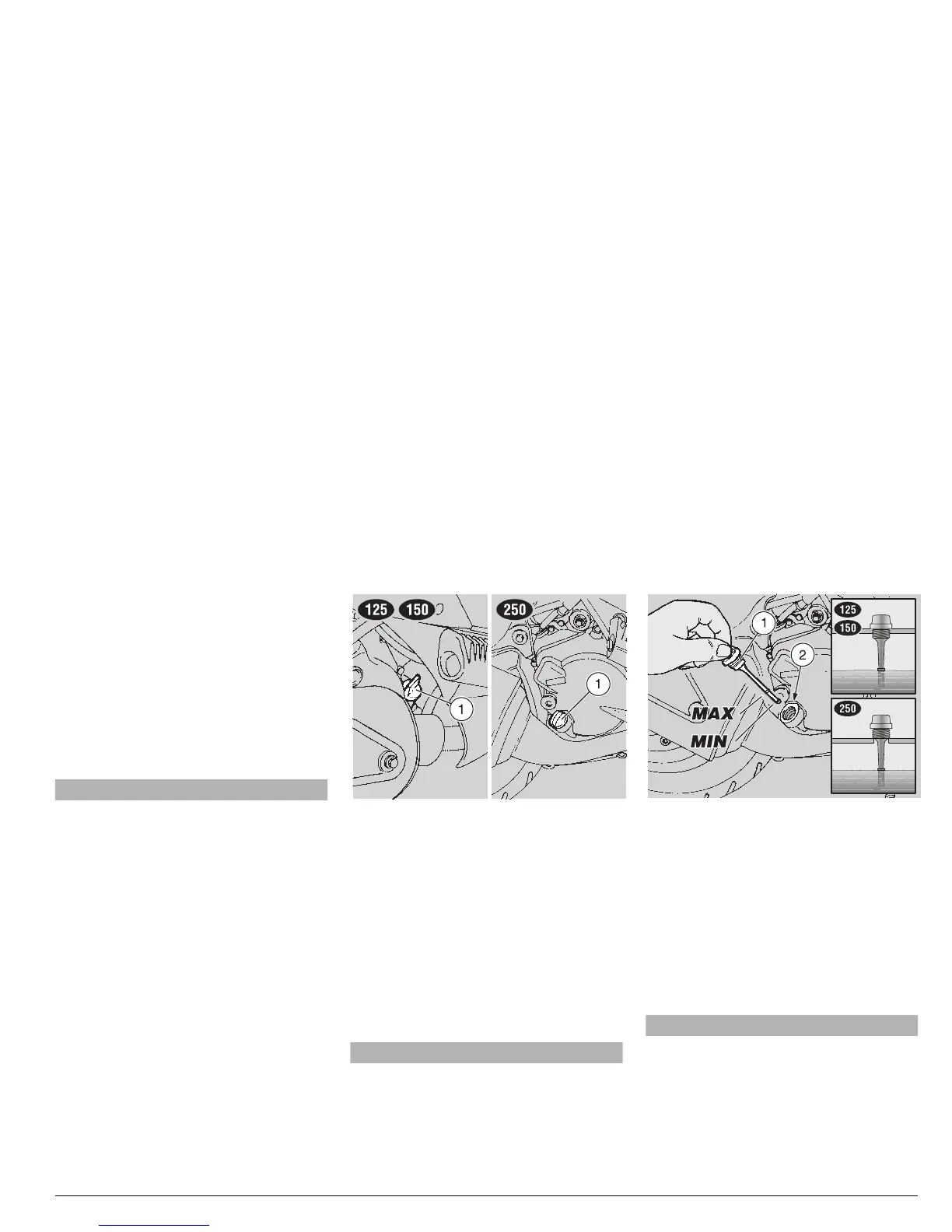45
use and maintenance Leonardo 125 - Leonardo 150 - Leonardo 250
#(%#+).'4(%%.').%/),,%6%,
!.$4/00).'50
Carefully read p. 25 (LUBRICANTS), p.
39 (MAINTENANCE) and p. 72 (LUBRI-
CANT CHART) .
CHECKING
NOTE Position the vehicle on firm and
flat ground.
◆
Position the vehicle on the centre stand.
aWARNING
The engine and the components of the
exhaust system become very hot and
remain hot for some time after the en-
gine has been stopped. Before handling
these components, wear insulating
gloves or wait until the engine and the
exhaust system have cooled down.
◆
Stop the engine and let it cool down, in
order to allow the oil to flow into the oil
pan and to cool down.
NOTE The non-performance of the oper-
ations described above may result in the
incorrect measurement of the engine oil
level.
◆
Unscrew and extract the plug/dipstick
(1).
◆
Clean the part in contact with the oil with
a clean cloth.
◆
+ Tighten the plug/dipstick (1)
completely, screwing it into the filling
hole (2).
◆
Ì Insert the plug/dipstick in the filling
hole (2) completely, without tightening it.
◆
Withdraw the plug/dipstick (1) again and
read the oil level on the dipstick itself:
MAX = maximum level;
MIN = minimum level.
The difference between "MAX" and
"MIN" is about:
–
+ 150 cm#;
–
Ì 500 cm#.
◆
The level is correct if the oil reaches ap-
prox. the "MAX" mark on the dipstick.
aCAUTION
Never exceed the "MAX" mark, nor
leave the oil below the "MIN" mark, in
order to avoid serious damage to the
engine.
◆
If necessary, provide for topping up.
TOPPING UP
◆
Pour a small quantity of oil in the filling
hole (2) and wait about one minute, so
that the oil flows uniformly into the oil
pan.
◆
Check the oil level and top up if neces-
sary.
◆
Top up by adding small quantities of oil,
until reaching the prescribed level.
◆
At the end of the operation, screw and
tighten the plug/dipstick (1).
aWARNING
Do not use the vehicle with insufficient
lubrication or with contaminated or un-
suitable lubricants, since this would ac-
celerate the wear of the moving parts
and may also cause irreparable failures.
